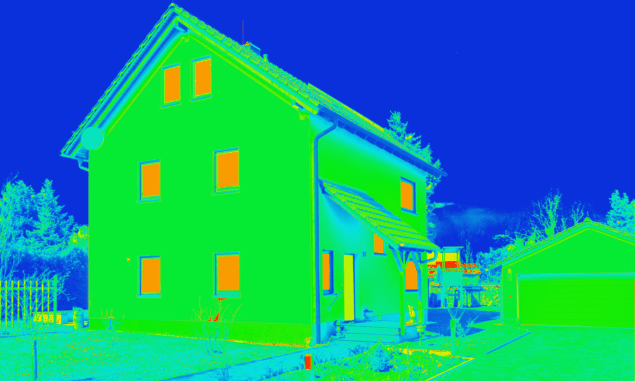
The Lawrence Berkeley National Laboratory (Berkeley Lab) has joined forces with window companies Andersen Corporation and Alpen High Performance Products to resurrect its “thin triple” super window design, first patented in 1991. The new collaboration aims to commercialize the super window, which is at least twice as insulating as 98% of the windows for sale today – potentially halving the estimated $20 billion in heating energy lost every year by windows in the US.
Window of opportunity
The new design is an evolution of the common double-glazed window. It has two layers of 3 mm thick glass that sandwich a third layer of very thin glass that is less than 1 mm thick. A standard low-emissivity coating that helps to block long-wave infrared rays is applied to the thin central glass. Finally, argon that would usually fill the double-glazed window cavity to reduce heat transfer is replaced by krypton, which has superior insulating properties.
Ahead of its time in 1991, the super window garnered “little commercial interest,” according to recently retired Stephen Selkowitz, former leader of the Windows and Daylighting research group at Berkeley Lab. But after gathering dust for 22 years, rising public awareness of climate change and green technology prompted the researchers to revisit the concept five years ago. In the 1990s, the costs of both the thin central glass and krypton were too high to be viable. Now however, market forces have seen these prices dramatically fall, convincing the window companies to invest in technology.
Unlike other highly insulating designs that have struggled – such as triple, vacuum and aerogel glazing – the super window is almost the same thickness and weight as a double-glazed window, requiring no costly redesign of window frames. What is more, only small changes in the window manufacturing process are needed.

Energy savings go through the roof
“The key here is to provide a path for window manufacturers to make the transition to dramatically new product capabilities, but without the cost and risk of a full production line makeover,” adds Selkowitz. “We call it a ‘drop in’ replacement for the existing insulating glass unit.”
Although Selkowitz warns that “it will likely be a year before we collectively have done enough ‘due diligence’ for the window companies to decide to invest in creating of a marketable product”, simulations and prototypes built and tested in the lab suggest widespread adoption of the super window could have a significant impact on home energy efficiency. Indeed, the windows exceed the performance of a well-insulated wall over the course of a year, and can even help heat homes located in colder climates by locking in heat from the Sun.



